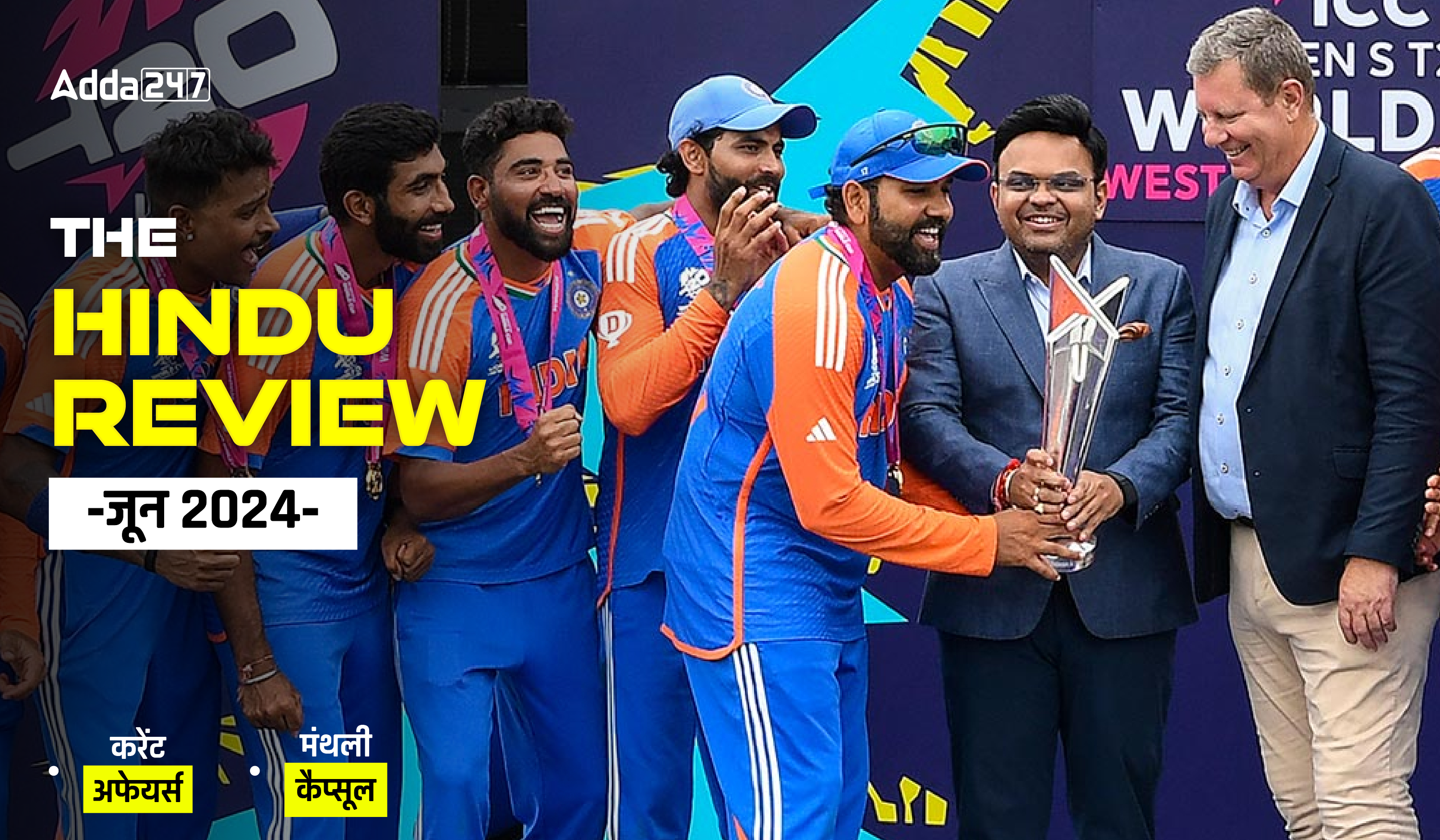
RBI had released advertisement for 926 posts of Assistant and now the prelims are over. Students should start preparing for RBI Assistant Mains 2020. Do not let this opportunity slip away. Adda 247 will provide you daily English Mock of “RBI Assistant Mains Daily English Mock 16th February 2020. From now on, Adda 247 will provide students with Mocks for RBI Assistant Mains that will help you to practice maximum topics in minimum time. In today’s Mock, we have a Reading Comprehension and Cloze Test based Practice Set. Stay tuned with bankersadda to get English Quiz and boost your preparation for the upcoming bank exam. You can also prepare with the study plan for RBI Assistant available on the bankersadda website.
Last month, the United Nations released the 26th revision of World Population Prospects and forecast that India will overtake China as the most populous country by 2027. The only surprise associated with this forecast is the way it was covered by the media. We have known for a long time that India is destined to be the most populous country in the world. Population projections are developed using existing population and by adjusting for expected births, deaths and migration. For short-term projections, the biggest impact comes from an existing population, particularly women in childbearing ages. Having instituted a one-child policy in 1979, China’s female population in peak reproductive ages (between 15 and 39 years) is estimated at 235 million (2019) compared to 253 million for India. Thus, even if India could institute a policy that reduces its fertility rate to the Chinese level, India will overtake China as the most populous country.
The element of surprise comes from the date by which this momentous event is expected. The UN revises its population projections every two years. In 2015, it was predicted that India would overtake China in 2022, but in the 2019 projections it is 2027. The UN has revised India’s expected population size in 2050 downward from 1,705 million in 2015 projections to 1,639 million in 2019 projections. This is due to faster than expected fertility decline, which is good news by all counts. Like it or not, India will reign as the most populous country throughout most of the 21st century. Whether we adjust to this demographic destiny in a way that contributes to the long-term welfare of the nation or not depends on how we deal with three critical issues. First, do we need to adopt stringent population control policies? History tells us that unless the Indian state can and chooses to act with the ruthlessness of China, the government has few weapons in its arsenal. Almost all weapons that can be used in a democratic nation, have already been deployed. These include restriction of maternity leave and other maternity benefits for first two births only and disqualification from panchayat elections for people with more than two children in some States along with minor incentives for sterilization.
As demographer Judith Blake noted, people have children, not birth rates and few incentives or disincentives are powerful enough to overcome the desire for children. Ground-level research by former Chief Secretary of Madhya Pradesh Nirmala Buch found that individuals who wanted larger families either circumvented the restrictions or went ahead regardless of the consequences. As one of her informants noted, “The sarpanch’s post is not going to support me during my old age, but my son will. It does not really matter if I lose the post of sarpanch.”Second, if punitive actions won’t work, we must encourage people to have smaller families voluntarily. There are sharp differences in fertility among different socio-economic groups.
In western societies, low fertility is associated with the conflict that working women face between work and child rearing and the individual’s desire to enjoy a child-free life. Not so for Indian couples. In India, couples with one child do not consume more nor are women in these families more likely to work. My research with demographer Alaka Basu from Cornell University shows that it is a desire to invest in their children’s education and future prospects that seems to drive people to stop at one child. Richer individuals see greater potential for ensuring admission to good colleges and better jobs for their children, inspiring them to limit their family size. Thus, improving education and ensuring that access to good jobs is open to all may also spur even poorer households into having fewer children and investing their hopes in the success of their only daughter or son. Provision of safe and easily accessible contraceptive services will complete this virtuous cycle. Third, we must change our mindset about how population is incorporated in broader development policies.
(a) Existing population especially from women who are in an age of child bearing.
(b) Adjustment of migration, deaths and expected births.
(c) getting it covered by media
(d) Instituing a one-child policy.
(e) none of the above
(a) Due to UN’s prediction that India would overtake China.
(b) Declination of expected fertility rate faster than usual.
(c) Revision of population projection by UN every two years
(d) Both (a) and (b)
(e) None of the above
(a) Restriction of maternity leave for first two births only
(b) Maternity benefits for first two births only
(c) Disqualifying people with more than two children from panchayat elections
(d) All of the above
(e) None of these
(a) Few incentives or disincentives
(b) Restricting all the benefits
(c)Disqualifying people from major roles of society
(d) Both (b) and (c)
(e) None of these
(a) Life of women getting stuck between work and child rearing
(b) Restricting individual’s desires to enjoy a life without children
(c) Both (a) and (b)
(d) Children are considered as a financial burden
(e) None of these
(a) Improving education
(b) Ensuring access of good jobs is open to all
(c) Granting medical facilities for only one child.
(d) Both (a) and (b)
(e) All of the above
(a) Strict
(b) Linient
(c) Flexible
(d) Convincing
(e) Compressed
(a) tyrannical
(b) Compassionate
(c) Barbrous
(d) Relentless
(e) Abominable
The Narendra Modi government’s proposal to ban e-cigarettes and other electronic nicotine delivery systems (ENDS) needs to be welcomed as such a move will ensure that Indians, especially, children, are kept away from these pernicious products. Such a ban has also been ……………....(A)by the Indian Council of Medical Research (ICMR), which called for a “complete prohibition on ENDS and e-cigarettes in India in the greater interest of protecting public health, in accordance with the precautionary principle preventing public harm from a noxious agent.”
(B) The Health Ministry last year sold (1) an advisory asking the States to manufactured (2) that products like e-cigarettes and e-nicotine-flavoured hookahsare not ensure (3), distributed advertised or issued (4).
Following this, 15 States, including Karnataka, Kerala, Tamil Nadu, Jammu and Kashmir and Mizoram, banned them. (C)”Several of the bans was under the Drugs and Cosmetics Act or the Poisons Act, under which nicotine were included as a ‘poison’.” Further, the Central Board of Indirect Taxes and Customs (Anti-Smuggling Unit) and the Drug Controller General of India directed all their officials to ensure ………………….(D) with the advisory.
Introduced about 10 years ago in India, e-cigarettes rapidly gained popularity, especially among the youth. A ………………..(E)among students, parents and teachers that these cigarettes are free of nicotine also contributed to their appeal. The reality is that the tobacco industry, hit by the success of the state’s efforts to reduce tobacco use otherwise, ………………..(F)to hold on to customers who would have otherwise quit.
(G)Research after (1) that many youngsters, who would otherwise (2) have never started (3) using nicotine, took up conventional smoking suggests (4) being introduced to e-cigarettes.
While the tobacco companies promotes e-cigarettes as a ‘less risky’ smoking option, some industry documents show that their real goal is to introduce ENDS products as an alternative to quitting. One company started selling its e-cigarette brand in 2014, promising that it will give the consumers the ‘pleasure of smoking any time anywhere’ (suggesting that they could use the product even at public places, where smoking is banned).
(I) Sun protection clothing such as rash guards are highly ……………………….. by dermatologists
(II) One of my professors ……………………. me for an internship and now I have a permanent job at the company.
(a)Recommended
(b)Excessive
(c)Perilous
(d)Prolonged
(e)None of these
(a) Both 2-1 and 3-4
(b) Both 1-4 and 2-3
(c) Both 2-4 and 1-3
(d) 1-3
(e) 2-4
(a)Several of the bans was under
(b)the Drugs and Cosmetics Act or the Poisons Act,
(c) under which nicotine were
(d)included as a ‘poison’
(e)Both (a) and (c)
(a) Paucity
(b)Estranged
(c)Envisage
(d)Compliance
(e)None of the above
(a)Misgiving
(b)Misinterpret
(c)Mishandling
(d)Misbehaved
(e)Misconception
(a) had developed such products
(b)were developed e-cigarettes
(c)denying the demands of tobacco users
(d)having cigarette consumers in mind
(e)keeping health of consumers
(a) 1-3
(b) 1-4
(c) 2-3
(d) 2-4
(e) 3-4
Sol. Referring to the first paragraph, option (a) is the right answer choice. “For short-term projections, the biggest impact comes from an existing population, particularly women in childbearing ages.”
Sol. Referring to the second paragraph, The UN has revised India’s expected population size in 2050 downward from 1,705 million in 2015 projections to 1,639 million in 2019 projections. This is due to faster than expected fertility decline, which is good news by all counts. Answer (b) is the right answer choice.
Sol. Referring to the paragraph second, These include restriction of maternity leave and other maternity benefits for first two births only and disqualification from panchayat elections for people with more than two children in some States along with minor incentives for sterilization. Option (d) is the right answer choice.
Sol. Referring to the third paragraph, option (a) is the right answer. “As demographer Judith Blake noted, people have children, not birth rates and few incentives or disincentives are powerful enough to overcome the desire for children. “
Sol. Referring to the fourth paragraph, In western societies, low fertility is associated with the conflict that working women face between work and child rearing and the individual’s desire to enjoy a child-free life. Option (c) is the right answer choice.
Sol. Referring to the Fourth paragraph, Option (d) is the right answer choice. “Thus, improving education and ensuring that access to good jobs is open to all may also spur even poorer households into having fewer children and investing their hopes in the success of their only daughter or son.”
Sol. Option (a) is the right answer choice.
Stringent- (of regulations, requirements, or conditions) strict, precise, and exacting.
Sol. Option (b) is the right answer choice.
Ruthlessness- the quality of lacking pity or compassion for others.
Sol. “Recommended” means “advised or suggested as good or suitable”. It perfectly fits in the blank (A) and in the given two statements as well. Hence, option (a) is correct answer choice.
(a)Excessive- more than is necessary, normal, or desirable; immoderate.
(b)Perilous- full of danger or risk.
(c)Prolonged- continuing for a long time or longer than usual; lengthy.
Sol. After making the replacements, the sentence thus formed is “The Health Ministry last year issued an advisory asking the States to ensure that products like e-cigarettes and e-nicotine-flavoured hookahsare not manufactured, distributed advertised or sold.”
Sol. Here, error is in both (a) and (b). In (a), “was” will be replaced by “were” because “bans” is in plural form and in (b) “were” will be replaced by “was” as “nicotine” is singular here.
Sol. The blank ‘D’ is suitably fit by (d) ‘compliance’ which means “the action or fact of complying with a wish or command”.
(a) paucity- the presence of something in only small or insufficient quantities or amounts
(b)Estranged – no longer close or affectionate to someone; alienated.
(c)Envisage – contemplate or conceive of as a possibility or a desirable future event
Sol. Here option (e) “misconception” fits the best as per the intended meaning of the sentence. Rest of the options are either grammatically incorrect or are out of context.
Sol. Option (a) is suitable to fill in the blank (F) making the sentence both grammatically and contextually correct.
Sol. Here, replacing “after” with “suggests”, the sentence thus formed is “Research suggests that many youngsters, who would otherwise have never started using nicotine, took up conventional smoking after being introduced to e-cigarettes.”



